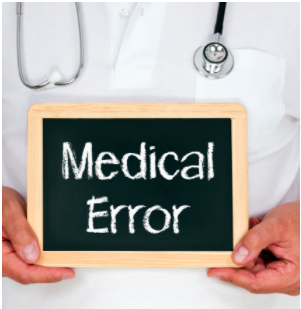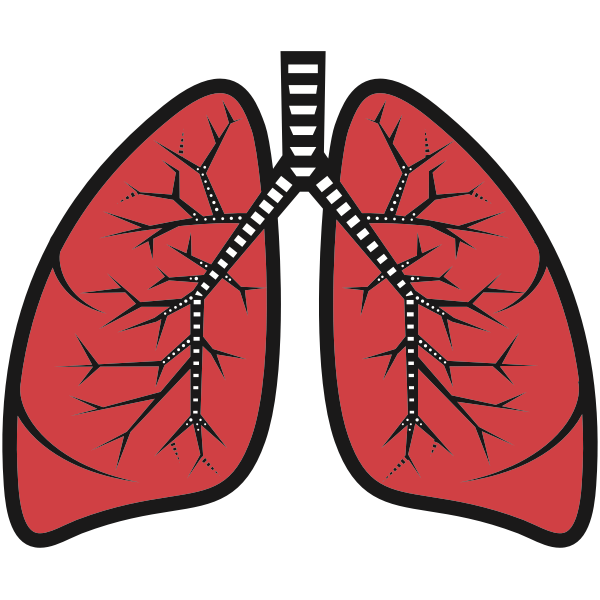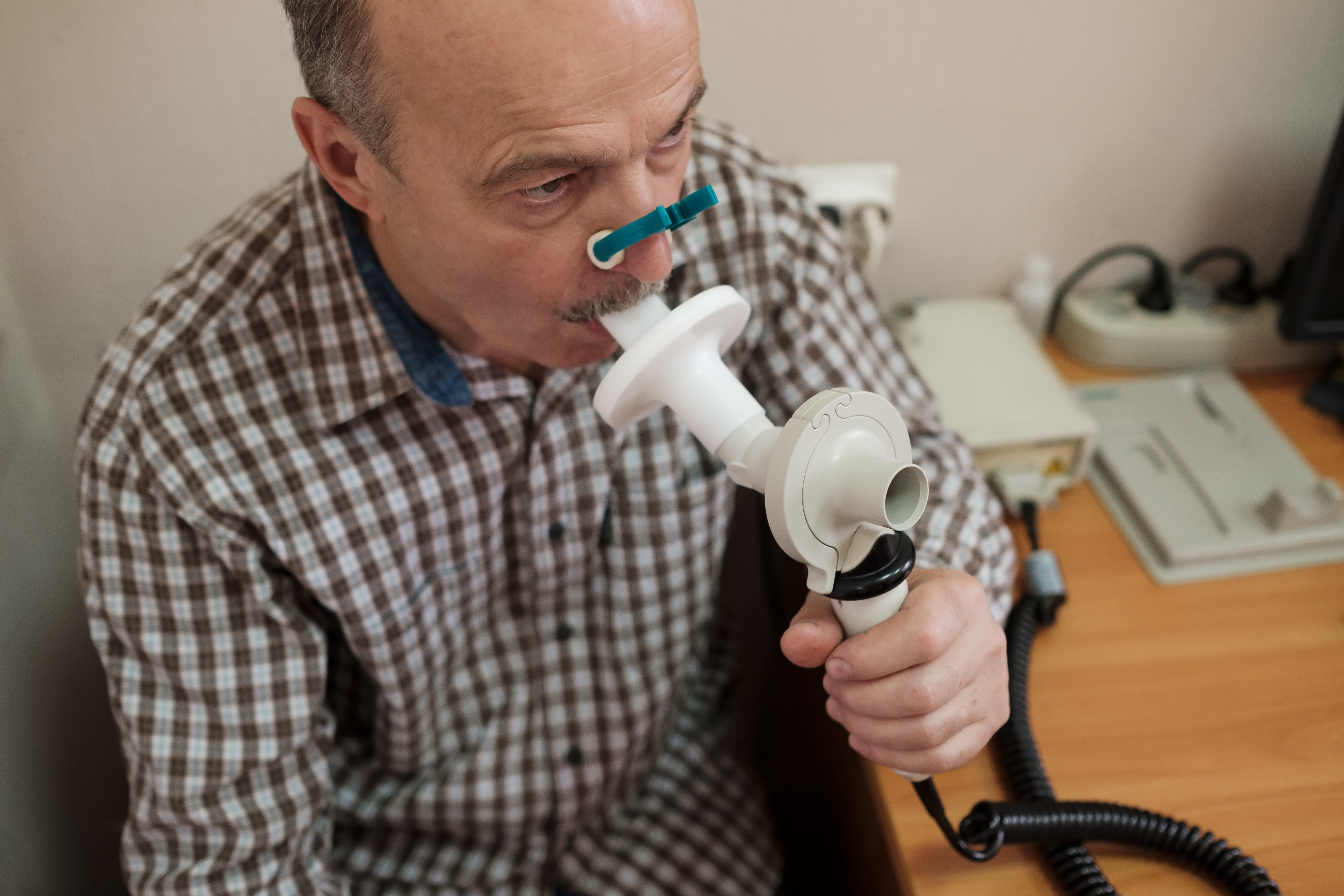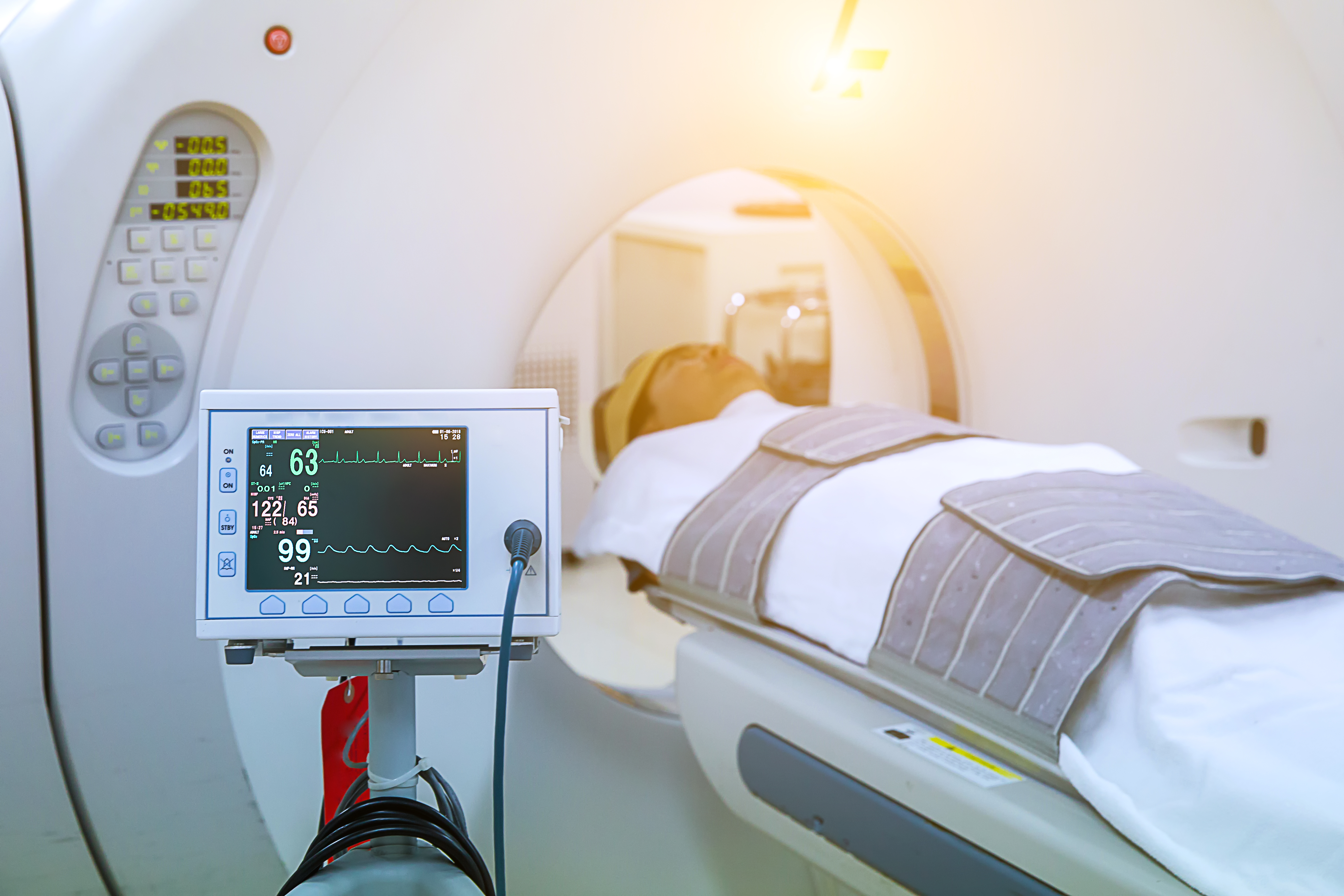
Health professionals are some of the most important and trusted members of our society. They’ve gone through many years of schooling and they’ve had to pass rigorous tests that make them qualified to look after our health.
While we can and should hold health professionals in high esteem, it’s important to remember that they aren’t infallible. Just like the rest of us, they are prone to mistakes from time to time.
One mistake health professionals can make is called a “diagnostic error.” This is when a patient receives a delayed diagnosis, wrong diagnosis, or missed diagnosis from a doctor which can lead to a patient using the wrong treatment or no treatment at all.
In this post, we’re going to take a look at how diagnostic errors affect people with lung diseases such as COPD, asthma, and cystic fibrosis (CF). If you have any questions, be sure to leave them in the comment section below and we’ll get back to you as soon as possible.
{{cta('fa8abc2a-1e88-4fa3-82fd-1cb5b9ed43b2','justifycenter')}}
What is a Diagnostic Error?
According to the National Academy of Medicine, a diagnostic error is the failure to establish a timely and accurate diagnosis of a patient’s health problems or an inability to communicate them effectively. These errors are divided into three groups:
Delayed Diagnosis
This is when a disease is diagnosed much later than it should be. After a delayed diagnosis, patients may have progressed to a point in their disease where it is difficult or impossible to receive certain treatments.

Missed Diagnosis
A missed diagnosis is when a patient has symptoms that are never addressed by a health professional. It’s estimated that 100,000 people in the United States are permanently disabled or die each year due to an illness that was either delayed or missed.
Wrong Diagnosis
A wrong diagnosis or misdiagnosis is when a patient is diagnosed with a condition that they do not have. In a worst-case scenario, a patient is diagnosed with a condition that is less urgent than the condition they actually have. This can lead to the delayed onset of treatment regimes that would improve medical outcomes for the patient.
The Cost of Diagnostic Errors
Diagnostic errors pose a major health risk to people all across the country. According to the Society to Improve Diagnosis in Medicine (SIDM), diagnostic errors are found in 10 to 20 percent of autopsies, meaning that 40,000 to 80,000 people die each year as a result.
![]()
Despite the fact that diagnostic errors affect as many as 12 million Americans every year, there remains a lack of federal funding and research that could help prevent these issues. At this point in time, SIDM is the only organization that is committed to improving the timeliness and accuracy of diagnosis and combating issues associated with diagnostic error.
Another problem with diagnostic error is that it’s very difficult for a patient to take legal action if malpractice is involved. According to Nolo, a legal resource website, medical malpractice cases are some of the most difficult cases a lawyer can take on, especially those involving diagnostic errors.

There are a lot of moving parts in a medical malpractice case and it requires a patient to prove the following:
- A doctor-patient relationship existed
- The doctor did not provide treatment in a timely and skillful manner
- And the doctor’s error resulted in harm to the patient
While this may seem pretty straightforward, there’s a lot of gray area and it requires an attorney to be particularly well-versed in medical jargon and processes. As a result, attorneys often charge a high price for these cases or they will simply turn them down altogether if they believe the case is not worth pursuing. According to the Rosenbaum Firm, even with strong evidence of negligence, patients win an average of 50 percent of medical malpractice cases.
The Role of Diagnostic Error in Lung Disease
Respiratory illness is one of the most common medical conditions in the world. According to the World Health Organization (WHO), chronic obstructive pulmonary disease (COPD) alone accounted for 3 million deaths in 2016, followed closely by lower respiratory infections such as pneumonia.

Not surprisingly, patients suffering from respiratory symptoms can also fall victim to diagnostic error. One of the most common diagnostic errors in terms of lung disease is the overdiagnosis of asthma.and the underdiagnosis of COPD. Since asthma is such a common disease (1 in 13 people have it) it’s not uncommon for health specialists to jump the gun and diagnose it before doing proper testing.
On the other hand, it’s likely that COPD is significantly underdiagnosed because its symptoms are often ignored as a sign of aging. COPD can progress differently depending on the individual, so a patient may experience symptoms for years before finally seeking help. Let’s take a look at some of the top reasons lung disease is often undiagnosed or misdiagnosed.

Similarity of Symptoms
Possibly one of the most common factors affecting the diagnosis of respiratory illness is the similarity of symptoms. For example, the symptoms between asthma and COPD are almost identical making it nearly impossible to diagnose an illness simply based on the symptoms you’re experiencing.

Another problem overlapping symptoms can cause is when comorbidities are present such is the case with cystic fibrosis and bronchiectasis. Cystic fibrosis (CF) is a chronic lung disease that usually begins in early childhood and it’s inherited through genetics. This condition affects the cells that create mucus causing it to become thick and sticky. This leads to coughing, wheezing, and frequent lung infections.
Cystic fibrosis commonly causes a condition called bronchiectasis which occurs later in life. It’s caused by damage and widening of the bronchial tubes which makes it difficult to clear mucus and bacteria from the lungs. If someone has lived with CF their whole life, it may be difficult to recognize the symptoms of bronchiectasis when they appear because they are nearly identical to that of CF.
Errors in Spirometry Testing
Spirometry is a type of lung function test designed to measure how much air you can inhale, exhale, and how quickly you can exhale. While spirometry may seem like a simple test on the surface, it’s actually very difficult to interpret the results correctly. Even a small error in spirometry testing can lead to inaccurate disease diagnosis.

During a spirometry test, patients are asked to exhale for a certain amount of time into a small mouthpiece. This will provide your doctor with two different measurements: forced vital capacity (FVC) and forced expiratory volume (FEV). FVC is the total amount of air you can forcefully exhale and FEV is the amount of air you can exhale in a given period of time.
{{cta('b59df0c1-c4de-47a8-8e1c-0d33d4b414aa','justifycenter')}}
Once these values are calculated, they are compared to “normal values” based on the patient’s age, gender, height, and weight. If any of this information is entered incorrectly, it could throw off the whole test causing your health specialist to either over exaggerate or under exaggerate the severity of your symptoms.

Aside from issues with interpreting test results, there are also a number of problems that can occur during the test itself. For example, a patient may perform the test incorrectly without the moderator knowing. If the patient does not inhale fully before blowing into the mouthpiece or they have air leaking out the side of their mouth when they exhale, the results could be under interpreted.
Ultimately, there are a lot of different factors involved in getting accurate results from a spirometry test. The test results can easily become skewed if the patient is not aware of how to perform it or the technician conducting the test is careless or inexperienced. When this happens, the results may be misleading or unhelpful when it comes to diagnosing a lung condition such as COPD.
Lack of Appropriate Testing
Another factor that can lead to diagnostic error is a lack of appropriate testing. A medical specialist may not perform the right tests or they may not perform enough tests to get an accurate picture of a patient’s lung condition.
While spirometry is often considered to be the most effective test for diagnosing COPD and asthma, other tests may be more effective when it comes to diagnosing other chronic lung diseases, especially the less common ones.

High-resolution computerized tomography (CT) scanning is one test that can be extremely beneficial in diagnosing lung disease. This is similar to an X-ray, but the computer will take multiple pictures from different angles.
Once the images are collected, the computer uses processing to make cross-sectional images of all the tissues in the lungs. Although X-rays can be useful in diagnosing some conditions, CT scans provide medical specialists with a much more detailed view of what’s going on in your lungs.
CT scans help to provide evidence of things like interstitial lung disease, an umbrella term for diseases that cause scarring (fibrosis) in the lungs. It can also be used to provide additional evidence for COPD and other lung diseases in order to provide a more accurate diagnosis.

Last but certainly not least, blood gas analysis can be useful in diagnosing many respiratory illnesses. Your doctor will either recommend that you have your blood drawn so that it can be tested in a lab, or he/she might use a pulse oximeter for a less intrusive option. This is a small device that slips over your finger.
Blood tests will provide your doctor with a lot of important information such as your partial pressure of oxygen (PaO2), partial pressure of carbon dioxide (PaCO2), pH, bicarbonate (HCO3), and oxygen content (O2CT).
Threshold for Defining COPD
Threshold is the value that needs to be crossed in order for COPD to be diagnosed. Currently, the threshold for COPD is an FEV1/FVC ratio of 0.70. While this is considered by many to be the most optimal threshold for COPD, there are other methods out there such as the lower limits of normal (LLN) method.

The LLN method uses an additional step of comparing the FEV1: FVC ratio to demographics such as age, height, race, and gender in order to determine a “normal.” A recent study, however, showed that the fixed threshold of 0.70 was consistently more reliable and accurate than LLN and other methods of diagnosing COPD.
If you’re concerned at all about a diagnosis that you did or didn’t receive, it never hurts to discuss them with your doctor. He/she will likely be very open about the methods used to come to a conclusion, and if you still have doubts, there may be an opportunity to get retested or have your doctor double-check the results.
Miscommunication Between Doctor and Patient
Possibly one of the most common reasons for respiratory illness being misdiagnosed is a miscommunication between a doctor and his/her patient. For example, a patient might wait too long to address their symptoms with their doctor or they might forget certain details about their symptoms.

Genetics is also a major determining factor of whether someone can develop a lung disease so if a patient miscommunicates their family’s history of illness, it may be significantly more difficult for their doctor to discover the root of their problems.
There are many mistakes that can occur on the doctor’s side as well. For example, he/she could keep inaccurate information about your height, age, gender, or weight which could skew the results of any test you take.
{{cta('43b79c5e-6bd6-4f02-ac27-2d038d20c146','justifycenter')}}
What You Can Do to Ensure Accurate Diagnosis
Be Open and Honest With Your Doctor
The best thing you can do in order to prevent diagnostic errors is to be open and honest with your doctor. Unfortunately, when people start experiencing respiratory problems, their first instinct is to shrug them off as a sign of aging or they wait until their symptoms have progressed to a point where they need to seek help.

Alternatively, you should be contacting your doctor as soon as problems arise. Most conditions such as COPD and asthma can be treated more effectively if they are diagnosed early on. These are both progressive diseases, so there is no way to cure them or reduce the damage effects. All you can do is prevent further damage from occurring.
Don’t be Afraid to Ask Questions
Another thing to remember when you go to the doctor is that there’s no such thing as a silly question when it comes to your health. Chances are if there’s something you’re wondering about, there’s always someone else out there wondering the exact same thing. So, when you go in for a doctor’s appointment, don’t be afraid to ask questions, whether they pertain to your symptoms, treatment plan, or anything else.

Another reason to ask a lot of questions is that it gives your doctor a better understanding of your concerns and more importantly, the way your condition is progressing. The more your doctor knows about your respiratory symptoms, the better he/she will be able to prescribe treatments that work for you.
Schedule Regular Doctor’s Visits
Lastly, you’re going to want to schedule more frequent doctor visits. At the end of the day, the more you communicate with your doctor, the easier it will be for him/her to track your progress. And even if you aren’t experiencing severe symptoms, your doctor may be able to diagnose you sooner, leading to better outcomes. It’s recommended that people 30 years old and younger should visit the doctor once every couple of years. But the older you get, the more frequently you should go.
![]()
Conclusion
Diagnostic error is always a possibility. However, you can significantly improve your odds of receiving a timely and accurate diagnosis by scheduling more frequent doctor visits, not ignoring respiratory symptoms, and not being afraid to ask a lot of questions. As a last resort, you always have the option to file a lawsuit if you believe that negligence or malpractice was involved.
Here at LPT Medical, we aim to provide respiratory patients with transparent and helpful resources for managing their disease. If you’re in the market for a lightweight portable oxygen concentrator like the Inogen One G5 or the Caire FreeStyle Comfort, our respiratory specialists would be glad to help you out by answering any questions you may have. Fill out the contact form at the side of the page to get started.


 So we can find the best portable oxygen concentrator for your needs!
So we can find the best portable oxygen concentrator for your needs!







